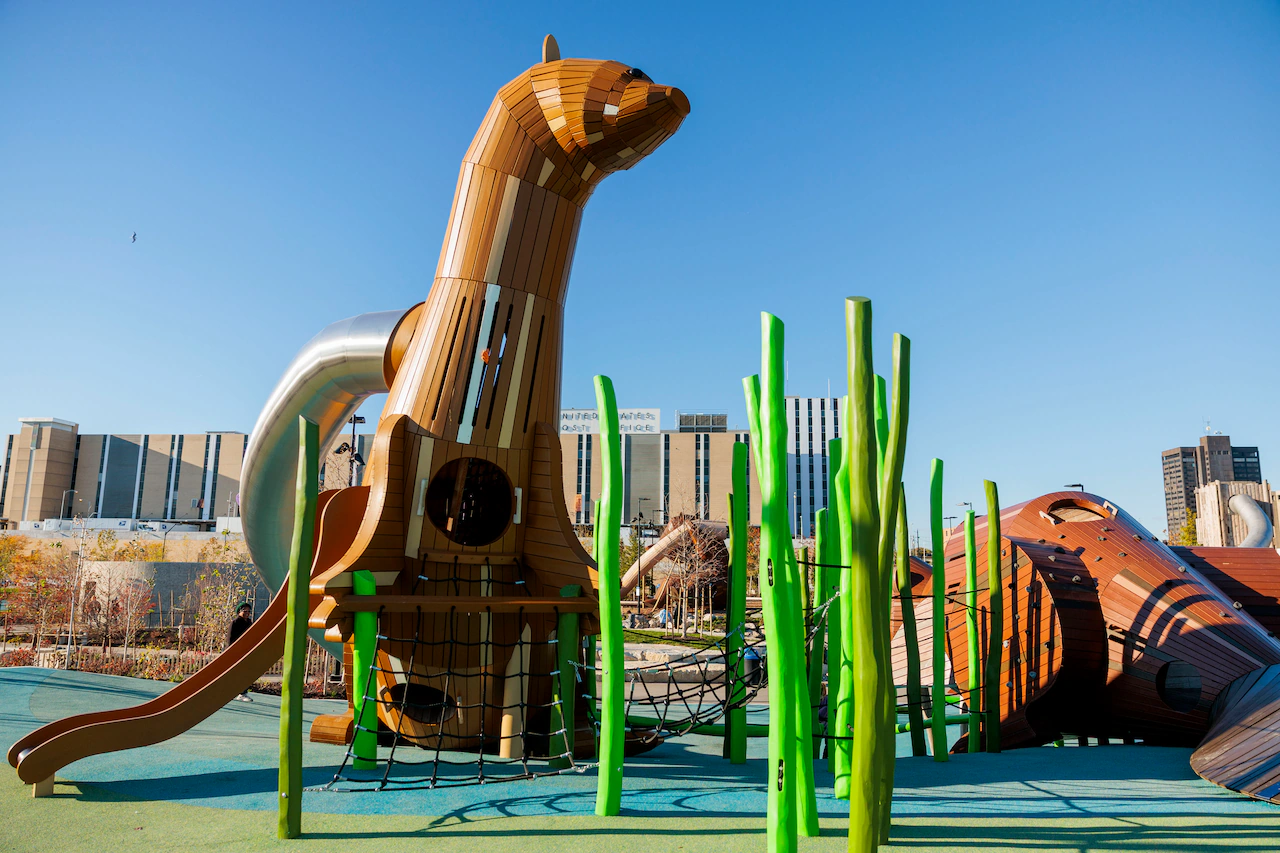Copyright cleveland.com

Detroit just unveiled a visionary $80 million, 22-acre waterfront park featuring giant playground sculptures, nature trails, and recreation pavilions. Meanwhile, Cleveland continues decades of dreaming about transforming its lakefront without much progress. That stark contrast had Today in Ohio podcasters wondering whether Cleveland is too stuck in the past to fulfill the dreams some have for growth and vitality. “Spectacular public spaces make a difference. It gives a place a vibe. It tells people, young families, we’re here for you,” said Chris Quinn on Monday’s episode “I look at Cleveland and I keep thinking we’re really designed for aging populations. We got great health care. Who needs that? (Aging populations) We have the Rock and Roll Museum, which is what? A tribute to boomers.” Detroit’s Ralph C. Wilson Jr. Centennial Park represents the capstone of a 20-year transformation that’s turned 55.5 miles of industrial riverfront into uninterrupted public access. The park, designed by the same firm behind Brooklyn Bridge Park and Chicago’s Maggie Daly Park, features whimsical elements like 26-foot animal sculptures, water gardens where children learn about ecosystems, and basketball courts sponsored by the Detroit Pistons. What’s most striking isn’t just the park itself, but how it came together. The Detroit Riverfront Conservancy—a public-private partnership created in 2003 by the city, General Motors, and the Kresge Foundation—kept the vision alive across multiple mayors and economic cycles. The result: an estimated 55,000 people showed up on opening weekend. Detroit isn’t alone in this transformation. Cities nationwide have reimagined their waterfronts with spectacular results. As Leila Atassi noted on the podcast: “Cincinnati built a 195-acre riverfront district where parking lots once stood... Milwaukee turned miles of its working riverfront into a year-round public riverwalk that’s lined with art and cafes and trails. Chicago... literally bulldozed an airport in the dead of night to create 120-acre Lakefront Park.” The common thread among these success stories? “Boldness and following through,” said Atassi. Quinn pointed out that Cleveland’s problems extend beyond just lakefront development. “When you look at the cities that are thriving, they’re not Balkanized like Northeast Ohio,” he noted, highlighting how the region’s fragmented governance hampers progress. “If we got away from it here and thought as one, we might get more momentum.” Burke Lakefront Airport represents a prime opportunity for Cleveland to catch up—a “jewel that can be developed,” as Quinn called it. But the city needs more than just a singular project; it needs a fundamental shift in thinking about what makes urban spaces vibrant and attractive to younger generations. The question remains: Will Cleveland continue designing itself for an aging population, or will it finally embrace the bold vision needed to compete with cities like Detroit, Nashville, Charlotte, and Houston—places that, despite their traffic problems and high housing costs, continue to attract new residents in droves? Mayor Justin Bibb may provide the energy needed to finally move Cleveland forward. As Atassi concluded, “That’s why I think Justin Bibb is poised to get this done. He’s got all that energy behind him. I really don’t think he’s going to drop the ball.” Listen to the episode here. Read more Today in Ohio news ‘They’re not VIPs’: Former FirstEnergy execs get special treatment in Ohio corruption case ‘It sounds like sci-fi’ -- but Ohio’s AI marriage ban might not be so crazy ‘Walking a fine line’: Ohio bill would let chaplains counsel public school students



